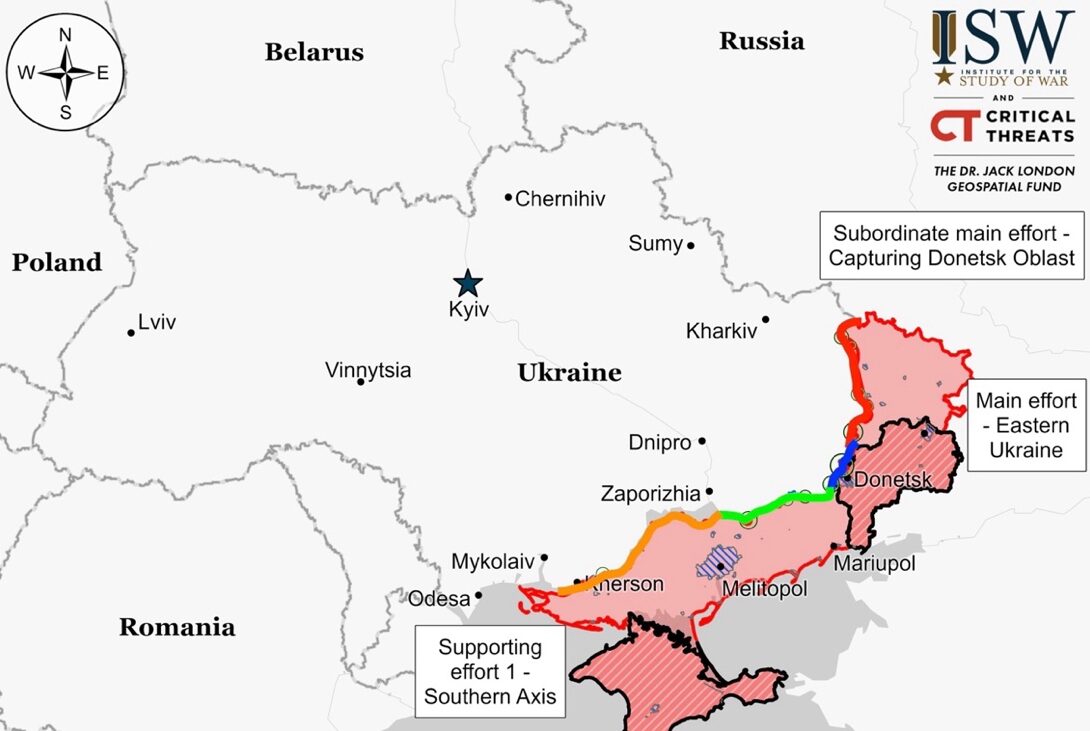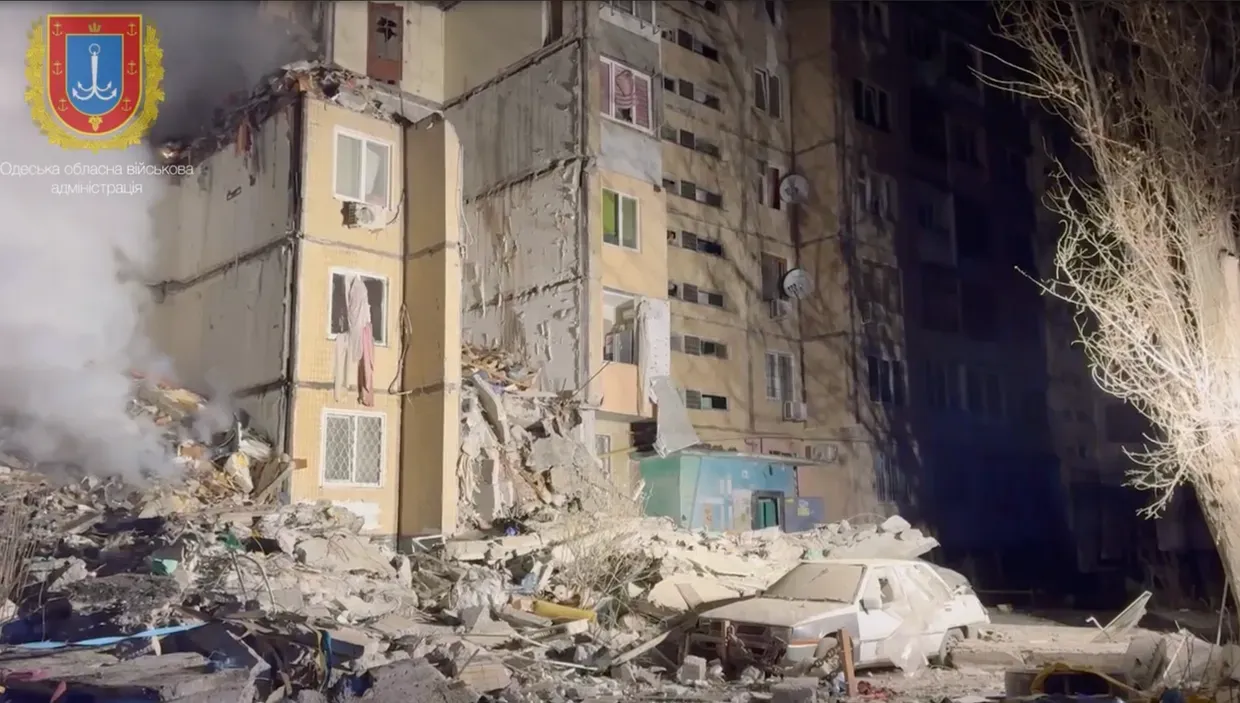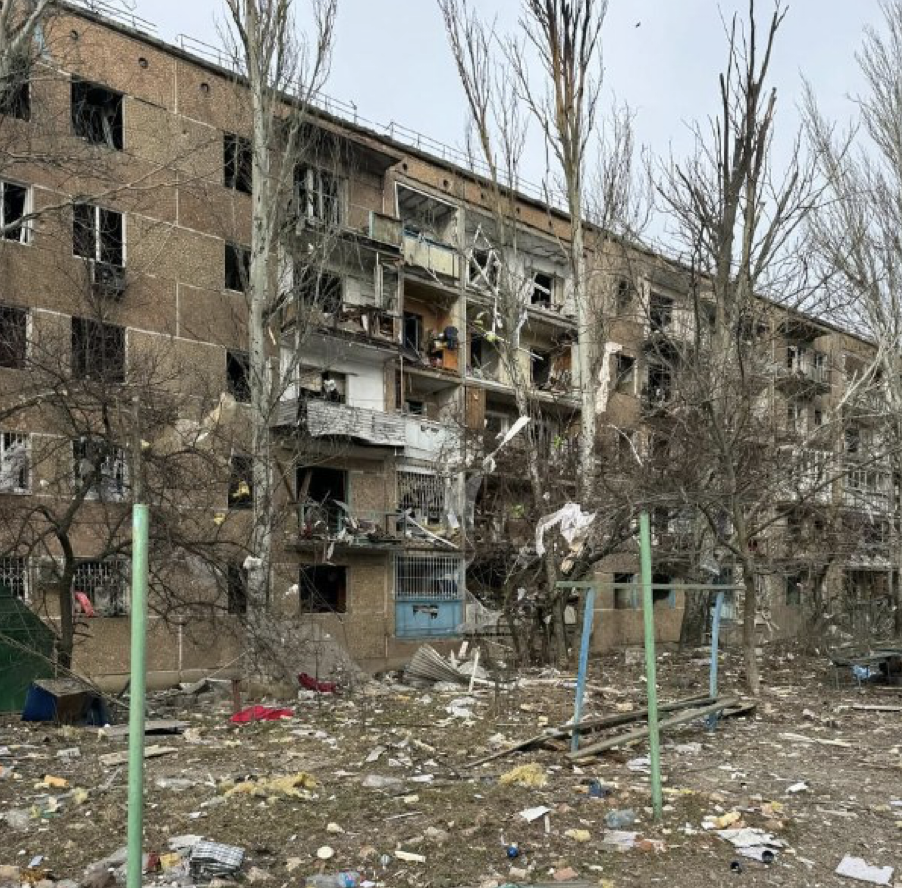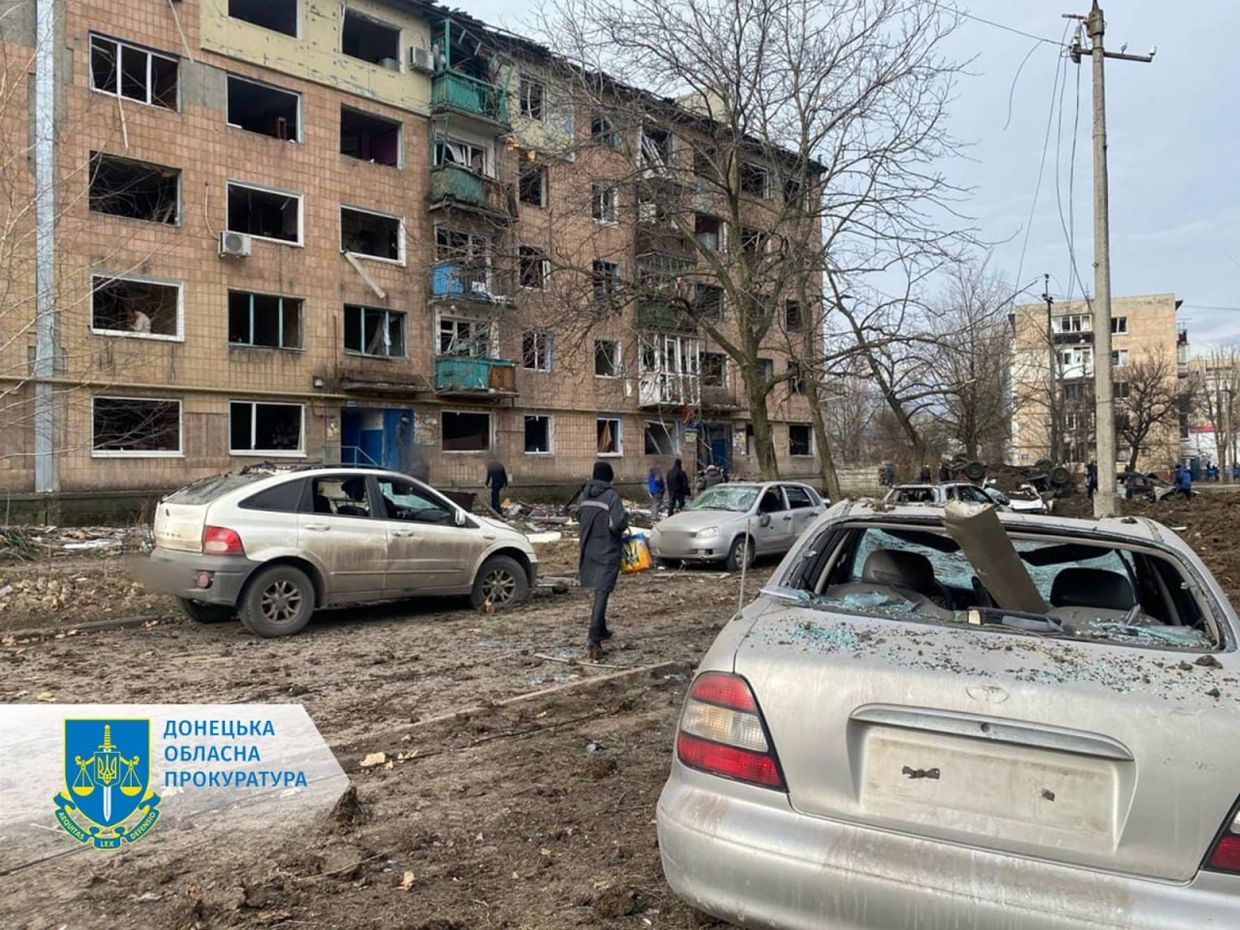Summary of the day: Amid negotiations between China, Turkey, and Russia over Ukraine, the Kremlin escalated its information operations to discourage international support for Ukraine. Recent losses in Russian aviation led to reduced air activity over eastern Ukraine, while delays in Western security assistance raised concerns about Ukraine’s energy infrastructure vulnerability. Ground operations near Avdiivka saw Russian forces adapting tactics, including troop advances, while regional administrations in Russia expanded efforts to mobilize resources.
Situation On The Ground And Air
Recent Russian aviation losses have led to a notable decrease in activity over eastern Ukraine, following the downing of two Russian Su-34 aircraft by Ukrainian forces. Ukrainian officials report a halt in Russian aviation activity since March 2, including the absence of A-50 radar detection flights. With Russian forces reportedly losing 15 aircraft since mid-February, the impact on their military operations is significant. However, the duration of this decrease in aviation activity remains uncertain, as Russian command may adjust tactics in pursuit of tactical gains despite losses.
Delays in Western security aid may leave Ukraine’s energy infrastructure vulnerable to Russian attacks. According to Maksym Timchenko of DTEK, Ukraine’s largest energy company, recent delays have weakened Ukraine’s ability to defend against Russian strikes. Russian forces have targeted Ukrainian energy sites multiple times in 2024, leading to widespread blackouts. With a critical shortage of air defense missiles and ongoing strikes, Ukraine faces tough decisions on defense priorities.

Luhansk Front – Initiative Russia
Donetsk Front – Initiative Russia
Zaporizhia Front – Initiative Russia
Kherson (Dnipro River) Front – Initiative Russia
Positional engagements persisted along the Kupyansk-Kreminna line. Russian milbloggers claimed Ukrainian forces captured positions near Tabaivka and Russian forces advanced in Synkivka, although evidence is lacking. Fighting also occurred near Terny, Yampolivka, Bilohorivka, and Verkhnokamyanske. Ukrainian forces noted a slight decrease in Russian offensive intensity, with Russian forces regrouping and preparing for assaults in other areas.
Positional engagements continued near Bakhmut with no confirmed frontline changes. Fighting occurred northwest, west, south, and southwest of Bakhmut. Russian Aerospace Forces reportedly intensified airstrikes west of Bakhmut.
Positional engagements persisted near Avdiivka with no frontline changes. Fighting occurred northwest, west, and southwest of Avdiivka. Ukrainian forces reported stabilizing situations in Berdychi, Orlivka, and Tonenke, successfully repelling Russian attacks. Russian military shortcomings were exploited by Ukrainian forces, including lack of grenade launchers and inaccurate maps.
Russian forces near Avdiivka are adapting their tactics, combining trained and untrained personnel in ground operations. Ukrainian servicemen report encountering waves of Russian attacks, with some soldiers well-prepared and others inexperienced. Attacks vary in intensity and quality, suggesting a strategy of alternating between trained and untrained forces to sustain offensive operations and minimize losses.
Ukrainian forces reported that Russian drones dropped nine chemical munitions on their positions in the Tavriisk direction, potentially violating international conventions. Ukrainian observer Kostyantyn Mashovets noted significant Russian troop deployments in the Avdiivka direction, totaling approximately 86,332 personnel.
Fighting persisted west and southwest of Donetsk City, with no frontline changes reported. Engagements occurred near Krasnohorivka and Heorhiivka to the west, and Pobieda and Novomykhailivka to the southwest.
A Russian milblogger claimed Russian forces had mixed success in attacks near the Donetsk-Zaporizhia Oblast border. They reportedly succeeded in attacks south and southwest of Velyka Novosilka.
Positional engagements near Robotyne in western Zaporizhia Oblast showed no frontline changes. Battles occurred near Robotyne and west of Novoprokopivka. Ukrainian forces are reportedly conducting a maneuver defense in Robotyne and remotely mining the area. Russian advances are slower near Verbove, with intensified artillery fire reported.
Positional engagements persisted near Krynky and the Antonivsky roadway bridge in east bank Kherson Oblast. A Russian milblogger alleged that lower-level Russian commanders are providing false reports of successful strikes on Ukrainian positions with TOS multiple rocket launchers. Additionally, a video from a Russian opposition outlet showed Russian servicemen waiting for evacuation from a trench in Krynky for two days.
Overnight on March 2 and 3, Ukrainian forces launched a mass drone strike on an oil depot in occupied Feodosia, Crimea. Russian sources claim to have shot down most of the drones, but one reportedly caused minor damage to an oil pipeline. Ukrainian strikes in the Black Sea are hindering the Russian Black Sea Fleet’s involvement in the war. Recent losses have prompted considerations to include seized Ukrainian naval vessels in their fleet, while newly built ships are facing operational challenges.
Human Costs Of War
Rescue operations ended at an apartment building hit by a Russian drone attack on March 2, killing 12 civilians, including five children. The incident occurred in the early hours, destroying 18 apartments, with victims, including infants and young children, found throughout the day. The attack disrupted heating in nearby apartments.
 Aftermath of Russian drone attack on Odesa during the early hours of March 2
Aftermath of Russian drone attack on Odesa during the early hours of March 2
In the past 24 hours, Russian attacks on civilian targets resulted in the death of two people and injuries to at least 21 others:
- Russian forces shelled Poniativka village killing a 58-year-old man. His body was recovered from the rubble by rescue workers.
- A 61-year-old woman injured in the Feb. 23 drone attack on Odesa has died from her injuries.
- At least 16 people were injured in Kurakhove, Donetsk Oblast, after a likely guided aerial bomb struck the city center around noon. Fifteen high-rise buildings were damaged, and two people are in serious condition.
- Russian forces shelled Myrnohrad in Donetsk Oblast using four Soviet-era S-300 missiles. The attack damaged 17 multi-story buildings, 16 private houses, two stores, two educational institutions, and a bank. Three people were injured, including two women aged 50 and 33 and a 37-year-old man.
- Russian forces fired an Iskander-M ballistic missile at Pokrovsk at 6:30 a.m., damaging nine buildings, three private houses, and two educational institutions. Two women aged 24 and 52 received shrapnel wounds.
 The aftermath of an aerial guided bomb attack on Kurakhove
The aftermath of an aerial guided bomb attack on Kurakhove
 A building damaged by a Russian airstrike on the town of Myrnohrad
A building damaged by a Russian airstrike on the town of Myrnohrad
The General Staff of Ukraine’s Armed Forces reported that 1160 Russian force casualties were recorded in the previous day alone.
Ukraine News
Russian forces launched a missile at Odesa Oblast, which failed and fell into the Black Sea. They also targeted Dnipro City and Nikopol with unspecified missiles and struck residential buildings in Pokrovsk, Donetsk Oblast. Meanwhile, Russian forces conducted glide bomb strikes using Su-24, Su-34, and Su-35 fighter aircraft, intensifying their air campaign despite recent losses. Additionally, the Russian military deployed Su-34 aircraft for airstrikes in Mariupol and Avdiivka following previous losses, indicating continued commitment to large-scale air operations.
All six checkpoints at the Ukrainian-Polish border remain blocked due to ongoing Polish farmers’ protests. The protests, which began in February, stem from concerns over Ukrainian agricultural imports and the EU’s Green Deal. The demonstrations have strained Ukraine-Poland relations, with some protestors displaying anti-Ukrainian sentiments and blocking the passage of trucks. Approximately 2,400 trucks are stuck at border crossings, with only those carrying humanitarian aid permitted to pass. Passenger vehicles are still allowed to cross in both directions. Polish Prime Minister Donald Tusk suggested temporary border closure talks, denied by Kyiv. Negotiations are ongoing to resolve the issue while considering the interests of both Ukrainian and Polish farmers.
Ukrainian Mobilization and Defense Industrial Base
Ukraine signed an agreement with Palantir, a U.S. tech company, to use AI for humanitarian demining. Since the invasion, over 270 Ukrainians, including 14 children, have died from explosives. The demining effort targets 156,000 square kilometers of potentially contaminated land, with 6 million Ukrainians at risk. Over 470,000 explosive objects have been neutralized, clearing 1,170 square kilometers. The agreement aims to accelerate demining through digitalization and AI, aligning with Ukraine’s National Mine Action Strategy until 2033. Palantir’s AI platform will assist in decision-making based on data from various sources. The goal is faster and cost-effective demining. The U.S. donated demining equipment worth over $1 million to Ukraine in February.
Ukraine’s Allies
According to CNN, U.S. House Speaker Mike Johnson has been in discussions with Republicans advocating for military aid to Ukraine to devise an alternative foreign aid bill, aiming for a late March or April vote. Johnson previously halted a bipartisan Senate-approved bill directing $61 billion to Ukraine upon its arrival in the House. House Foreign Affairs Chairman Michael McCaul is leading the efforts to craft an alternative bipartisan plan, distinct from the Senate’s proposal. The House version, reportedly allocating $66 billion to Ukraine, Israel, and Taiwan, focuses on stricter border policies but excludes humanitarian aid. This proposed bill is likely to encounter opposition from both parties due to its stringent border restrictions, absence of humanitarian assistance, and provisions for Israel’s activities in Gaza. Despite potential hurdles, it may still progress, as indicated by some pro-Trump House Republicans, who typically oppose aid to Ukraine, acknowledging the influence of defense hawks in advancing such legislation.
Canadian Foreign Minister Melanie Joly announced new sanctions against Russia following the death of opposition leader Alexei Navalny. Navalny died on February 16 under controversial circumstances in a Russian penal colony. The sanctions target six Russian officials, aiming to pressure Russia for a transparent investigation into Navalny’s death. The move aligns with similar actions by the U.S., EU, and U.K., who also imposed sanctions related to Navalny’s death and Russia’s actions in Ukraine.
Poland is engaging in informal talks with EU leaders, seeking exemptions from the European Green Deal regulations amid ongoing protests by Polish farmers against Ukrainian agricultural imports. The protests have led to the blockage of all six border crossings with Poland. Deputy Foreign Minister Andrzej Szejna stated that Poland aims to secure exemptions from regulations that could disrupt its market. Warsaw argues that Ukrainian imports threaten Polish farmers’ livelihoods, prompting a ban on certain Ukrainian products. Szejna warned of further disruptions if the EU delays addressing Poland’s concerns. President Zelensky expressed concern over the crisis’s impact on bilateral relations.
Lithuanian Defense Minister Arvydas Anusauskas visited the United States for talks with U.S. Defense Secretary Lloyd Austin. Discussions centered on bilateral security cooperation and U.S. military aid to Ukraine. Anusauskas emphasized the critical importance of supporting Ukraine amid ongoing delays in aid approval by U.S. lawmakers.
Russia News
The U.K. Defense Ministry reported an all-time high of approximately 983 Russian casualties per day in February, attributing it to Russia’s intense warfare strategy. The total estimated Russian military losses since the invasion began vary, with the UK estimating over 355,000 and Ukraine around 416,800. Independent Russian media suggest approximately 83,000 Russian soldiers have died in the conflict.
According to the Wall Street Journal, Russia’s spy network has grown in size and influence since the start of the invasion of Ukraine. After initial disruption, the FSB’s foreign intelligence has regained strength. European officials believe open borders allowed FSB agents to flee and join spies abroad. The FSB’s military counterintelligence division has become the largest, targeting dissenters abroad aggressively. The killing of defector Maksim Kuzminov in Spain raised concerns. Alleged Russian spy rings have been uncovered in Ukraine, the UK, and Slovenia. Experts note increased collaboration between Russian intelligence agencies.
Russian Federal Security Service (FSB) carried out a counter-terrorism operation in Karabulak, Republic of Ingushetia. Six militants, reportedly linked to the Islamic State and wanted by Russian authorities, were killed. Conflicting reports suggest casualties among law enforcement personnel and civilians.
A Russian ultranationalist criticized the military command for not recognizing the involvement of mobilized personnel in capturing Avdiivka. Milblogger Mikhail Polynkov claimed that the 87th Separate Rifle Regiment, mainly comprised of mobilized personnel, has not been acknowledged for its role. Despite participating in operations since December 2022, they have not received recognition. This highlights ongoing concerns about fairness within the Russian military.
Russian Mobilization and Defense Industrial Base
Russian regional administrations are increasing efforts to mobilize civilians. In Novosibirsk, Mayor Anatoly Lokot signed a decree requiring utility companies to provide data on debtors to military offices. This suggests an attempt to target recruitment efforts towards individuals facing economic difficulties.
A Russian milblogger reported on March 2 that the Russian “Vostok” Design Bureau plans to mass-produce the “Scalpel” drones soon. Testing began in September 2023, with production scheduled for October 2023. Sources suggested Russian forces used these drones in Ukraine since November 2023, although usage details remain unclear. The bureau is linked to the Donetsk People’s Republic “Vostok” Battalion, currently testing the drones.
Russian Narratives and Propaganda
German officials confirm Kremlin’s information operation targeting Western states, particularly Germany, to deter additional military aid to Ukraine. German Defense Minister Boris Pistorius labels leaked recording of German military discussing Taurus missiles for Ukraine as part of Russian President Vladimir Putin’s “information war” against the West. Kremlin amplifies recording, accusing Germany of planning strike on Kerch Strait Bridge, escalating tensions. Russian officials depict Western aid to Ukraine as significant escalations, intensifying propaganda efforts.
According to the Institute for the Study of War (ISW), Russia is conducting a disinformation campaign to gain concessions from the West before peace talks. Despite public statements suggesting Russia’s disinterest in genuine negotiations, they blame Ukraine and the West for the lack of progress. China and Turkey have expressed interest in facilitating talks, which Russia manipulates to push its own agenda. While calls for dialogue emerge, Russia accuses Ukraine of delaying peace talks. Ukraine insists on discussions based on its 10-point peace formula, including the withdrawal of Russian troops, which Russia rejects. Documents reveal Russia’s terms aim to deny Ukraine NATO membership and weaken its military, maintaining vulnerability to Russian aggression. ISW believes Russia’s peace negotiations claims are likely tactical, aiming to pressure the West and shift responsibility onto Ukraine and its allies.
Ukrainian officials are bracing for heightened Russian disinformation campaigns targeting President Zelensky’s legitimacy, particularly aimed at military personnel. Sources revealed that Ukraine’s Security Service anticipates intensified efforts from March to May, focusing on spreading doubts about Zelensky’s presidency and stirring discord among civilians and military leadership.
Russian sources are spreading false information to sow panic among Ukrainians, claiming that civil servants are evacuating from Kherson City and Kharkiv City ahead of supposed Russian offensives. However, no credible evidence supports these claims, and major Russian military operations in these areas remain highly unlikely.
Source Materials
Institute for the Study of War – understandingwar.org
The Kyiv Independent – kyivindependent.com
Kyiv Post – kyivpost.com
